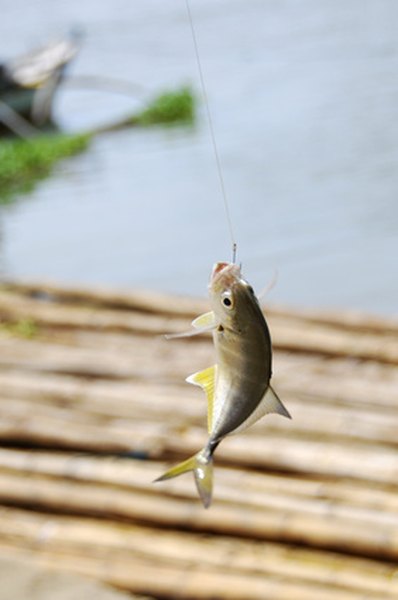
Waxworms make a popular live bait, especially for freshwater panfish, due to their high fat content and lively action on the hook. Interestingly, waxworms aren't a species of worm but the larvae of the wax moth. Due to their small size, fishermen typically place two waxworms on a single hook for the presentation. Fishing in shallow water for bluegill, crappie and perch works best. In areas where live bait is permitted for trout fishing, try waxworms in rivers and streams.
Items you will need
Rod and reel spooled with line
Size 8 to 10 hooks
Clip-on bobbers
Tie a small hook, size 8 or 10 to the end of the main line using a clinch knot.
Press the button on one end of a clip-on bobber to release a wire loop. Slip the fishing line under this loop so that the hook hangs below at the desired depth for fishing, then release the button to secure the line to the bobber.
Pierce the midsection of a live waxworm with the barb of the hook, threading the bait onto the hook until the barb emerges on the other end. Each end of the waxworm is free to wriggle. Add a second waxworm to the hook if desired. They're small and adding another can help attract fish.
Cast the line within 10 feet of the shore, near banks and lily pads. When fishing for crappie look for dead, submerged trees or shrubs where these fish congregate, then cast out toward them.
Tips
- Keep waxworms cool and out of direct sun to prolong their life and keep them lively in the water.
References
Tips
- Keep waxworms cool and out of direct sun to prolong their life and keep them lively in the water.
Writer Bio
James Clark began his career in 1985. He has written about electronics, appliance repair and outdoor topics for a variety of publications and websites. He has more than four years of experience in appliance and electrical repairs. Clark holds a bachelor's degree in political science.



